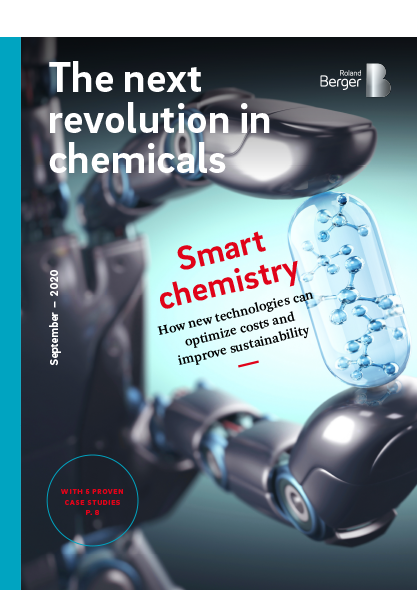The next revolution in chemicals
![{[downloads[language].preview]}](https://www.rolandberger.com/publications/publication_image/636_roland_berger_performance_improvement_in_chemicals_cover_1_download_preview.png)
Our publication about smart chemistry shows what the next revolution in chemicals can look like.


"The biggest hurdle for companies is to recognize that they have potential beyond their core processes."
It’s been a tough few years for the chemicals industry. Crude oil prices have plummeted as an increase in supply has far outstripped demand. Demand has fallen due to market uncertainty and rising unemployment. And trade disputes and the coronavirus crisis have accelerated the pace of deglobalization, severely disrupting supply-chain systems. These challenges pose a serious threat to the great majority of industry players, and almost all can expect profits to be hit.
Yet in this volatile environment, some companies are performing better than others. These ‘best in class’ performers are continuing to realize growth and profitability despite the hostile business environment. In this White Paper we look at how they are achieving this, and what others can learn from them. It focuses on the Commodity and Specialty sectors, analyzing EBITDA margins, cost structures, value chains and environmental factors to identify where the greatest potential for improvement lies.

"Artificial intelligence and Big Data are key drivers of cost optimization."
We find that the post-coronavirus chemicals landscape will be shaped by falling revenues in many business sectors, which will force across-the-board cost optimization. The new objective will be to optimize the cost structures of all production processes to increase revenues despite lower demand. It is this that ‘best in class’ players are already doing, especially regarding the optimization of cost of goods sold (COGS) expenses.
Our analysis shows that new technologies such as artificial intelligence (AI) and the exploitation of Big Data are key drivers of cost optimization. In short, they enhance global operations and make them more sustainable and robust. We offer case studies to demonstrate how such technologies can be utilized, and identify two key target areas – logistics and production processes – where companies can best take advantage of them. Together these will help to drive the next revolution in chemicals.

![{[downloads[language].preview]}](https://www.rolandberger.com/publications/publication_image/636_roland_berger_performance_improvement_in_chemicals_cover_1_download_preview.png)
Our publication about smart chemistry shows what the next revolution in chemicals can look like.